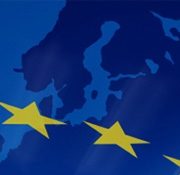For the record, the French government has made draft law to boost the French economy through business development. This is the PACTE (Action Plan for Growth and Transformation of Enterprises) draft law. The law was adopted at first reading by the National Assembly on October 9, 2018. We will do another a post to inform of the effective entry into force of the law.
Part of the law includes significant changes in French patent law, with a view to promoting its attractiveness.
For this part, the provisions of the draft law have advantages in the sense of attractiveness sought, but also disadvantages that may have a counterproductive effect.
The biggest positive effect would be an announcement effect, namely that companies hearing government’s efforts are more inclined to invest, expand their businesses and expand their portfoliosof IP rights; combined with effective improvement related to the other provisions of the law.
We will review these patent provisions in a synthetic way, with for each one, the current situation, the advantages and disadvantages:
1 °) The provisional patent application
This is the point that is most commented by people not aware of the legal issues of patent law. The relevant provisions have been removed from the draft PACTE Law to be introduced by regulation.
The aim is to bring it closer to the American system where applicants have the opportunity to file an application that does not necessarily fulfill the formal requirements, at reduced cost, without the filing being analyzed by the Patent Office (in our case the INPI). The applicant then has the opportunity to re-file the subject-matter of the provisional application one year later at the most, in due form.
The advantage could be a first quick filing to have an application date at a lower costs.
In the current system, as already discussed in a previous post, it is already possible to file a patent application without paying the official fees, to have a filing date and benefit from the effects of a provisional application.
Unfortunately, substantive issues usually arise. The costs of preparation and filing by an expert are intended to cover several subject-matters functionning in the same way as the preferred embodiment of the applicant, allowing to have a wide scope of protection, more difficult to circumvent.
If an applicant files a provisional (or definitive) patent application without the assistance of an expert, the description will likely be limited in terms of coverage, and it will be difficult or impossible to increase the scope of the patent application, as well as having a first filing date.
Therefore, whether for a provisional definitive or final application, the assistance of an expert is highly recommended for the drafting of the patent application.
A provisional application will therefore set specific rules, but the “provisional” effect can already be used today.
The implementation by regulatory means would be provided in 6 months according to a statement of Mr. Bruno LEMAIRE in September 2018.
2 °) Strengthening the quality of patents (examination of inventive step)
One of the important measures of the draft PACTE law is the possibility for the INPI to reject patent applications for non-invention (in particular for lack of technical effects) or for lack of inventive step (Article 42bis).
In the current situation, the INPI can reject a patent application only for manifest lack of novelty, as regards the conditions of patentability. Inventive step and the non-invention aspect are examined before the courts in case of litigation.
The advantage of this provision would be the issuance of patents that further satisfy the requirements of patentability. It would result mechanically that fewer patents would be issued by the INPI which benefits third parties and not applicants. This measure will probably lead to a decrease in the number of French filings, and deflate patent portfolios.
A common practice of having patents or parts thereof serving for a business purpose will be greatly limited. These patents still make it possible to be viewed by the customers as a company in a constant search for innovation even if there is not a breakthrough innovation every time. This currently benefits all types of applicants (SMEs and large groups).
This provision will result in an increase in INPI’s staff, an increase of analysis time and an increase of the time to issue the French patent. An increase of the INPI official fees is therefore to be expected. Similarly, the experts will have to spend more time on the files taking into account these changes of law, which will result in an increase of the consulting costs (in the current state, the expert checks that certain elements are indeed new and preferably inventive and confirms this to the client, without necessarily having to demonstrate inventiveness in detail to the INPI).
The entry into force is planned within two years after the promulgation of the PACTE law.
3 °) Opposition proceedings before the INPI
The opposition procedure will allow any third party with an interest in acting to question the validity of the patents issued by the INPI. If the mechanism used at the EPO is used, there will be some exchange of written arguments and then some oral proceedings.
In the current state, third parties only have the opportunity to file observations with relevant documents without being party to the proceedings and without any obligation to identify themselves or to prove an interest in acting . The third-party observations are possible 2 months after the publication of the patent application. Beyond that, you have to go to court.
The advantage would therefore be greater legal certainty for third parties, and standardization with other countries (namely the EPO, Germany, Italy, Spain, Switzerland, Austria, Sweden, Norway , Finland, the United Kingdom, Denmark, Japan and the United States).
This proposal seems to go in the right direction, but will necessarily, in the same way as above, impose associated procedural and advisory costs.
4 °) The promotion of the utility certificate
The utility certificate is a title similar to a patent but of reduced duration, and issued without examination of the INPI. The law aims at increasing its duration from 6 to 10 years (as in Germany), and to implement the possibility of converting an application for a utility certificate into a patent application.
Only in case of litigation, a search will be required. With the PACTE law, it can be envisaged that research will also be required with the said transformation.
The improved utility certificate will come closer to the current potentially non-inventive patent with a shorter lifetime, and without a search report by the EPO (making it possible to anticipate the outcome of a European filing on the same invention).
The measures are mainly administrative and should not lead to substantial increases in costs.
5 °) A great absentee of the proposals remains the designation FR-PCT
To date, the international applications to be validated in France are necessarily made through the EPO, and the European patent is then validated in France.
It would have been interesting for foreign applicants wishing to be protected only in some European countries to have the possibility of directly designating France. A direct designation is already possible in Germany and the United Kingdom namely, and this would be in preparation in Ireland, Italy and the Netherlands namely.
In conclusion, the government attempts through this means to stimulate the development of companies and the protection of their industrial property to reach the levels of other countries, including Germany. The most important lever would have been to change the minds of entrepreneurs namely by training the companies on the interests of the protection of intellectual property. Indeed, German entrepreneurs have quickly have the reflex to file a patent application while French entrepreneurs are more inclined to test the product on the market which is generally detrimental to the validity of a patent filed thereafter.
SOPERYAH IP








